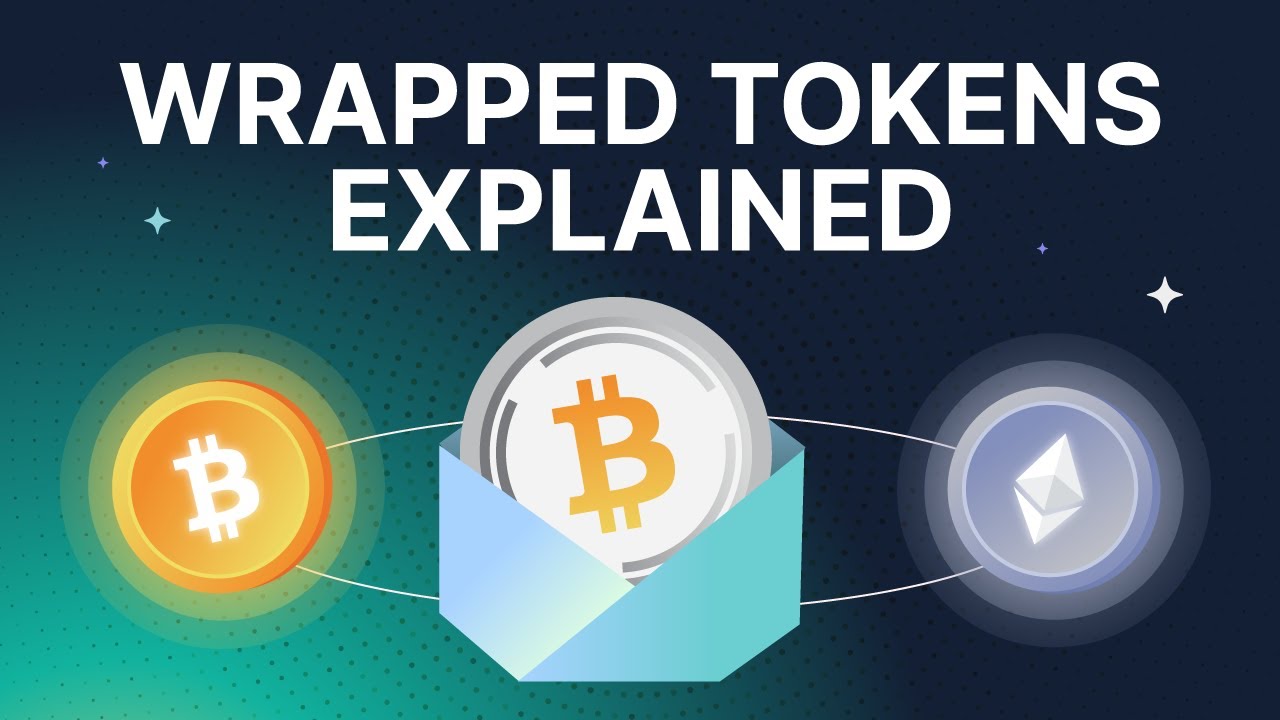Wrapped tokens are special digital coins that represent another kind of coin or asset on a different blockchain. Imagine you have a toy that only works in one kind of playroom. If you want to play with it in a different playroom, you might need a special wrapping to make it fit and work there. That’s similar to what wrapped tokens do in the world of finance on the blockchain, known as DeFi or Decentralized Finance.
The main idea behind wrapped tokens is to allow people to use their assets in new ways. For example, if you have Bitcoin but want to play in a place that only accepts Ethereum, you can wrap your Bitcoin into a token that behaves like Ethereum. This helps people trade and use different digital coins together without restrictions.
With wrapped tokens, all sorts of exciting things are happening in DeFi. People can lend, borrow, or trade their assets more easily. This creates more opportunities for everyone involved. The revolutionary part is that wrapped tokens make it possible for anyone to use their favorite coins on different platforms, increasing their value and usability.
In a nutshell, wrapped tokens are like magical wraps that let digital coins play together in harmony, changing how we look at money. They help everyone have more fun with their assets in this exciting new world of DeFi!
Glossary:
Wrapped Tokens: Digital coins that represent another asset on a different blockchain.
DeFi: Decentralized Finance, a financial system using blockchain technology.
Blockchain: A digital ledger where transactions are recorded.
Assets: Valuable items or resources, like cryptocurrencies.
What Are Wrapped Tokens?
Wrapped tokens are digital assets that represent another cryptocurrency on a different blockchain. They are designed to make it easier for users to trade and use their assets across various platforms and protocols. Essentially, a wrapped token takes the value of a cryptocurrency and wraps it in a token that is compatible with other networks.
How Do Wrapped Tokens Work?
When a cryptocurrency is wrapped, it is taken from its original blockchain and deposited with a custodian. The custodian then mints a corresponding wrapped token on the new blockchain. This wrapped token is backed 1:1 by the original asset. So, for each cryptocurrency you wrap, there is an equivalent wrapped token that can be freely traded.
- The user sends their cryptocurrency to a custodian.
- The custodian verifies the transaction and locks the original asset.
- The custodian mints the wrapped token and sends it to the user.
- The wrapped token can now be used on a different blockchain.
Why Are Wrapped Tokens Important in DeFi?
Wrapped tokens play a crucial role in the decentralized finance (DeFi) ecosystem. They allow users to use their assets in various DeFi applications that may not support their native blockchain. This interoperability opens up a multitude of financial opportunities.
“Wrapped tokens provide a way for users to access various DeFi platforms without selling their original assets.”
Benefits of Wrapped Tokens
- Asset Mobility: They enable users to move their assets between different blockchains.
- Liquidity: Wrapped tokens often offer better liquidity in DeFi markets, allowing for quicker trades.
- Access to DeFi: Users can access different DeFi projects, enhancing their financial opportunities.
Popular Examples of Wrapped Tokens
| Bitcoin | wBTC (Wrapped Bitcoin) | Ethereum |
| Ethereum | WETH (Wrapped Ether) | Ethereum |
| Litecoin | Wrapped Litecoin | Ethereum |
Secure Use of Wrapped Tokens
While wrapped tokens offer numerous advantages, it is essential to be aware of the risks. The primary concern is the reliance on custodians. If a custodian is hacked or mismanages funds, users could lose their digital assets. Therefore, choosing a reputable custodian is crucial.
“Users must always research custodians and understand the risks associated with using wrapped tokens.”
Future of Wrapped Tokens in DeFi
The future of wrapped tokens looks promising as DeFi continues to grow. More projects are likely to emerge that will create wrapped versions of various assets, increasing the options available to users. This development can lead to increased liquidity and better trading opportunities in the DeFi space.
Conclusion
In summary, wrapped tokens are revolutionizing the DeFi landscape by allowing for greater interoperability and access to various financial products. Their ability to bridge different blockchains empowers users, giving them more control over their assets and financial strategies.
What are wrapped tokens?
Wrapped tokens are digital assets that represent a cryptocurrency or other asset on a different blockchain. They are designed to enable the use of assets on decentralized finance (DeFi) platforms that operate on a distinct blockchain than the original asset. For instance, Bitcoin can be wrapped and used on the Ethereum blockchain as Wrapped Bitcoin (WBTC).
How do wrapped tokens work?
To create a wrapped token, the original asset is locked in a secure vault, and an equivalent amount of the wrapped token is minted on the target blockchain. This process ensures that the value of the wrapped token is always equal to that of the original asset. When users want to retrieve the original asset, the wrapped tokens are burned, and the original asset is released from the vault.
What are the advantages of wrapped tokens?
Wrapped tokens enhance interoperability between different blockchains, allowing users to access DeFi services across various ecosystems. They provide liquidity, increased trading opportunities, and offer users the ability to earn yields on assets that may not natively support smart contracts.
What’s A Wrapped Token? | WBTC, WETH Explained
How do wrapped tokens impact DeFi?
Wrapped tokens play a crucial role in the DeFi space by facilitating cross-chain transactions and enabling a diverse array of financial products. They attract users from various blockchain communities, thereby increasing capital efficiency and expanding the overall DeFi ecosystem.
Are there risks associated with wrapped tokens?
Yes, there are risks, including custody risk, where the security of the vaults that hold the original assets is a concern. Additionally, users must trust the party responsible for minting and burning the wrapped tokens. Market risks associated with price volatility also apply, just as with any cryptocurrency.
Examples of wrapped tokens?
Some popular examples of wrapped tokens include Wrapped Bitcoin (WBTC), Wrapped Ether (WETH), and Wrapped Litecoin (WLTC). Each of these allows users to utilize their assets on different blockchains within the DeFi landscape.
How do I acquire wrapped tokens?
You can acquire wrapped tokens by participating in platforms that offer the wrapping services, such as decentralized exchanges (DEXs) or specialized wallets that support asset wrapping. Alternatively, you can trade your original asset for wrapped tokens directly on these platforms.
Can wrapped tokens be unwrapped?
Yes, wrapped tokens can be unwrapped. Users can convert their wrapped tokens back into the original assets by going through the unwrapping process, which involves burning the wrapped tokens and releasing the original assets from the vault.
Is there a fee for wrapping and unwrapping tokens?
Typically, there are transaction fees associated with wrapping and unwrapping tokens. These fees may include network fees and potentially service fees charged by the platform facilitating the transaction. Always check the specific platform’s fee structure before proceeding.

